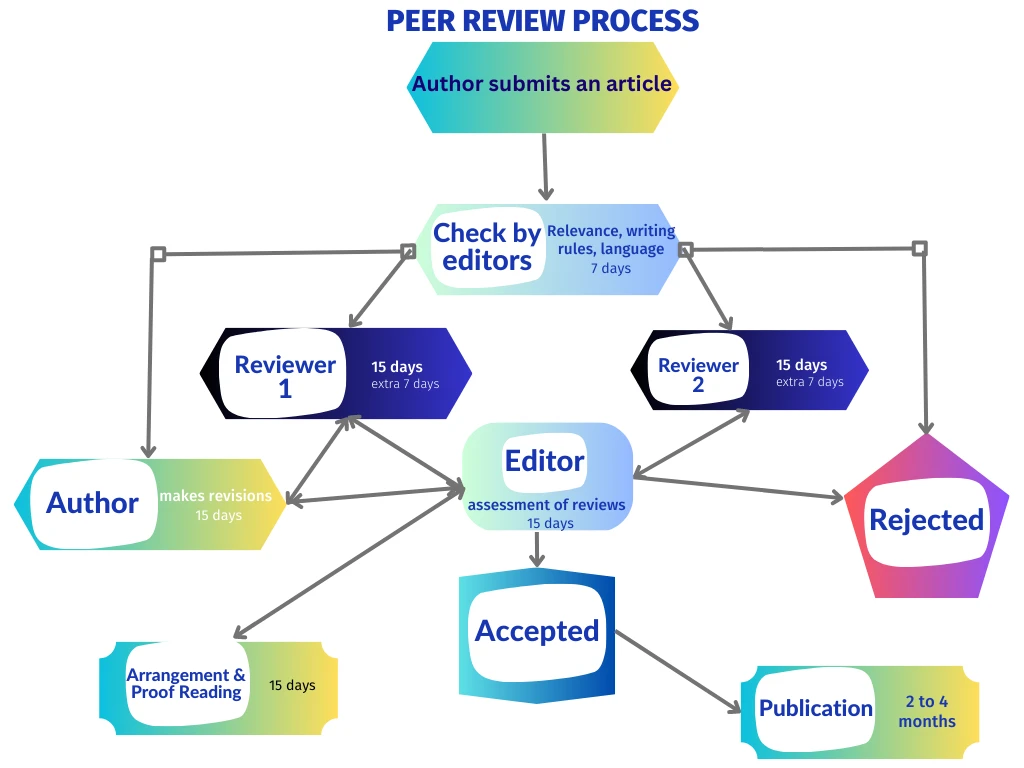
Instruction to Authоrs
The online journal "BulgarianOneHealthJournal" publishes scientific, popular science, review and information materials. Scientific articles should contain original scientific results and ideas. They will be reviewed by two anonymous and independent reviewers. The author shall be notified of the result by letter to his/ her email address.
Suggested articles are not editable. The authors are responsible for the spelling, punctuation, word order, graphic layout, citation, and logical structure of the materials offered.
StrikePlagiarism.com is used for checking plagiarism.
Manuscripts are sent as attachments to editors@onehealthjournal.eu

Original own studies, reviews, case reports and short communications can be submitted to Bulgarian One Health Journal. The manuscripts should comply with the following requirements:
- comply with the journal scope;
- comply with the journal requirements and publishing policy;
- contain original experimental data;
- have not been published elsewhere.
Research articles already published as preprints or other mean and a DOI number have been assigned are not accepted for publication in Bulgarian One Health Journal.
Submission of manuscripts
Manuscripts written in English, have to be submitted trough the journal website, here: https://www.onehealthjournal.eu/submit-article. It is obligatory to include the names, work position, organization and contacts details (e-mail phone) of the leading (corresponding) author for communication purposes.
Requirements to themanuscripts/ Manuscript preparation guidelines
Manuscripts have to be written in English, in Word format and structured as follows:
1. Original papers:
Title – brief and clear, corresponding to the main subject of the manuscript, in English, capital letters, without abbreviations, Times New Roman, font size 12, centered, bold;
Author (s) – name, family name and affiliation, written in upper and lower case letters, Times New Roman, font size 12, centered, bold, in the following order – name, institution, e-mail of the leading author (corresponding author), and then the same data for the co – authors. If the authors have a different place of work, they should be marked with asterisks above the author's name to match the address and contact details;
Summary – brief description (max. 250 words) of the essential information and paper contribution to the respective scientific topic, in English, Times New Roman, font size 12;
Key words - Up to 5 key words in English to be included below the text, Times New Roman, font size 12, Italic.
Introduction
Provide a brief overview of the scope and relevance of the research. The section should include a short statement of why the research was conducted. Include a little review of the key literature. The introduction should conclude with a short statement of the overall aim of the experiments and a comment about whether that aim was achieved.
Materials and methods
The section should present the research design, research type, research duration, inclusion/ exclusion criteria, choice of subjects, etc., detailed description of the methodology, including sample collection, processing, laboratory analysis, statistical tests used for data analysis etc.
Results
Present and illustrate your data objectively and concisely, if appropriate, with figures/ tables. In the main text, describe each of your results by a specific observation. The results should provide details of all of the experiments that are required to support the conclusions of the paper.
Discussion
The section should provide an interpretation of your results and make comparisons with other studies. If your results differ from your expectations, include the possible explanation of that. If your results agree, then describe the theory that the evidence supported.
Conclusions
The main conclusions of the experimental work should be presented. In this section, state any conclusions that can be drawn from your data. The conclusion may be a subsection of the Results and Discussion section, or it may be a separate section.
Acknowledgements
The section is where you may wish to thank people indirectly involved in the research. However, it is important that anyone listed here knows in advance of your acknowledgement of their contributions. Do not include dedications.
References
All sources cited in text must appear in the reference list and all items in the reference list must be cited in text.
All references should be listed numerically in the order they've been cited within the paper. At the beginning of each reference, the bracketed number should be included.
The quoted literature should be arranged in alphabetical order (Cyrillic, Latin) and described according to the standard – author, title, literary source, year, volume, number, page.
At least 30% of the references of the submitted manuscripts should include references published in the last five years. In all citations in the text the author’s family name and the year of the publication should be given.
If the authors are two, both names are referred to. If they are 3 or more: the first author’s name should be used, followed by “et al.” If several authors are cited, their names are chronologically arranged and if their publications are in one and the same year - alphabetically.
Citations to the journal’s articles should be cited in the text as: (Kim, 2019), (Belajio and Scali, 2021), (Martin et al. 2023). Name of all authors be written, and name of the Journal be written in full. Authors are encouraged to write DOI of each cited article. The list of references at the end of manuscript must be arranged alphabetically and each reference in the list should appear in the following form:
Example:
Reference to a journal publication:
Bradbury J and Garuti Y, 1978. Dual infection with Mycoplasma synoviae and a tenosynovitis-inducing reovirus in chickens. Avian Pathology 7: 407-419. DOI: 10.1080/03079457808418294
Desborough J, 2000. The stress response to trauma and surgery. British Journal of Anaesthesia 85: 109-117.
Koev K, Zhelev G, Marutsov P, Gospodinova K and Petrov V, 2018. Isolation and primary identification of shiga toxin producing Escherichia coli O157 in dairy cattle. Bulgarian Journal of Veterinary Medicine 4: 445-450. DOI: 10.15547/bjvm.1077
Tables
To be provided in a separate file. Tables should be numbered in Arabic numerals according to their sequence in the text. Each table should have a unique title comprehensible enough without reading the text.
Figures, graphs and drawings
To be provided in a separate file. The scale of the figure should be indicated at the right bottom by a line scale and the size is given in parentheses at the end of the figure caption, e.g. (bar = 10 mm). Each figure, graph or drawing should have a caption/title. The caption should be concise and typed separately, not on the figure/ graph area. All figures are to be sequentially numbered with Arabic numerals. Figures should always be cited in text in consecutive numerical order.
Digital photographs
The resolution of digital photographs should be at least 300x300 dpi, in .jpeg or .tiff format. Each photographs should have a concise title. The photographs should always be cited in text in consecutive numerical order.
Address for correspondence
Full name; Institution; Telephone number, Fax number (if applicable); Email address
2. Case reports, short communications and reviews - follows the same order of presentation but sections are not introduced by separate titles.
Requirements to the article size:
Original articles: abstract of max. 250 words;
Reviews: max. 10,000 words; abstract of max. 250 words;
Short communications: max. 5,000 words; abstract of max. 150 words; up to 4 figures/tables;
Case reports: max. 5,000 words; abstract of max. 150 words; up to 5 figures/tables
SI (Système International) should be used for all units of measure.
Chemical formulae should be given according to the rules of International Union of Pure and Applied Chemistry (IUPAC);
Biological nomenclature – should be in line with the latest versions of the International Code of Botanical Nomenclature, the International Code of Nomenclature of Bacteria, the International Code of Zoological Nomenclature; international nonproprietary names should be used for drugs, followed by their trade name and the manufacturer in brackets.


